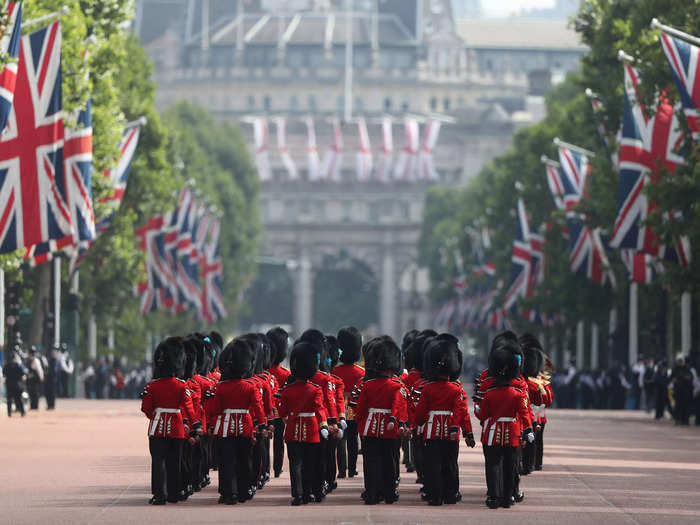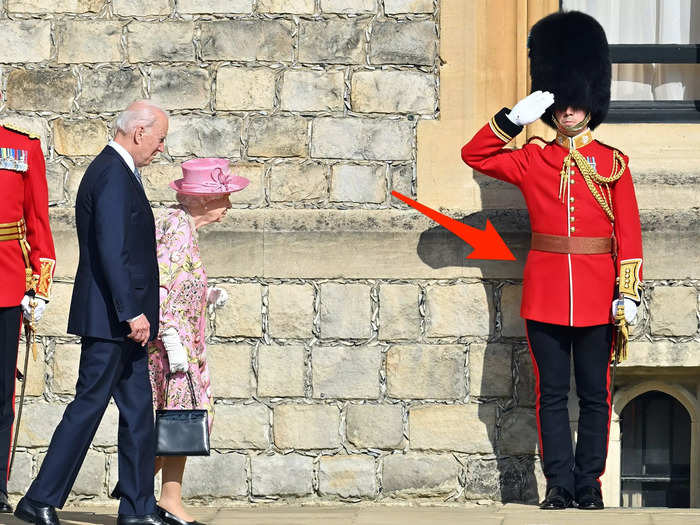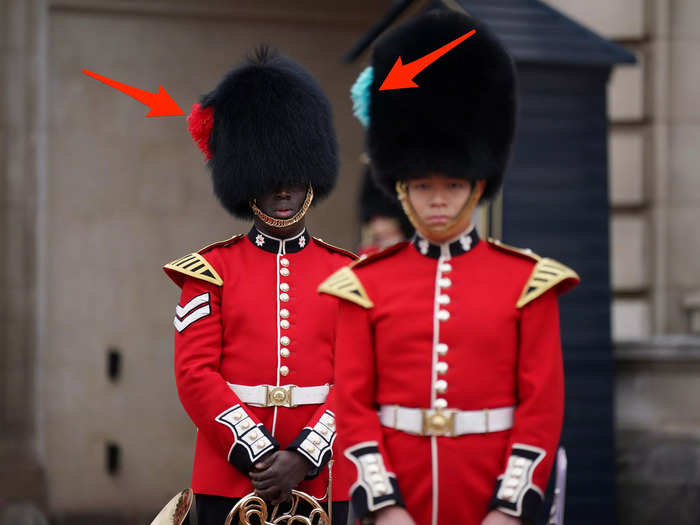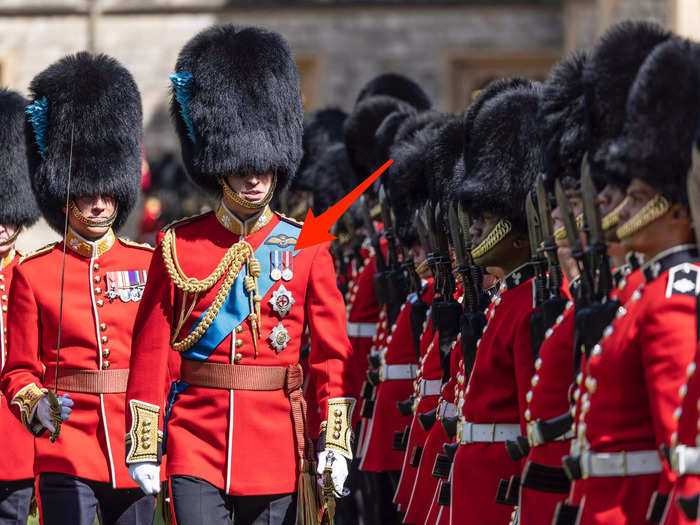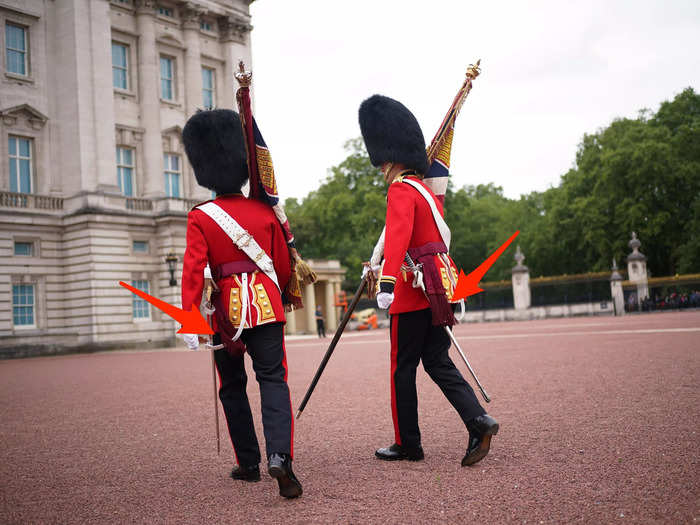Royal guards are part of the royal Household Division and carry out responsibilities such as taking part in the Queen's birthday parade.
Members of the Household Division at the Queen's birthday parade, Trooping the Colour, in London in 2018. Daniel Leal / AFP via Getty Images
Royal guards are soldiers who are part of regiments under the Household Division, according to the official website.
Since the 17th century, their role has consisted of both public and ceremonial duties, such as taking part in the sovereign's birthday parade and the Changing of the Guard ceremony at Buckingham Palace, St. James's Palace, and the Wellington Barracks, the website adds.
The guards, famous for their blood-red outfits and lofty black hats, can often be spotted in royal locations in London and Windsor.
According to a guard who spoke to Insider at a royal event, the bright-red color of the tunics is rooted in tradition and helps cover up bloodstains.
A royal guard salutes the Queen and President Joe Biden in 2021. Pool/Max Mumby/Getty Images
Insider's reporters attended a Trooping the Colour event overseen by Major General C J Ghika – an annual parade for Queen Elizbeth II's birthday – and spoke to a royal guard there.
The guard, who did not wish to publicly disclose his identity as his role doesn't typically allow him to speak to the media but whose employment was confirmed by Insider, said the distinct color has a practical reason.
"The red was for back in the day," he said, "so it wouldn't show blood when people were injured."
This military motivation may not be the only reason the uniforms are red. In February 2021, royal commentator Richard Fitzwilliams told the publication Live Science: "The reason British soldiers traditionally wore red is because it was the cheapest and most readily available dye."
Representatives for the royal guards did not immediately respond to Insider's request for comment.
Most guards wear a black bearskin hat, but the feather plume's color depends on the regiment, the guard said.
Royal guards wearing different colored plumes. Yui Mok - WPA Pool/Getty Images
The guard said most officers wear a black bearskin hat but that each specific regiment has a different color plume.
"There are different plumes, so the Coldstream Guards have it on the right-hand side and it's red. The Grenadiers have it on the left-hand side, theirs is also red," he told Insider.
"The Scots guards don't wear one," he added. Meanwhile, the Irish guards have a blue plume and the Welsh have a green and white one, according to the Changing of the Guard website.
Tatler previously reported that there are a total of seven Army regiments that wear the hat. The publication added that the British Army is believed to purchase between 50 and 100 of the towering black hats every year, costing roughly £650 each, or around $813.
He added that the medals on a guard's jacket correspond to their military service, including the years they have served and tours completed.
Medals on a guard’s jacket relate to their military careers. Kirsty O'Connor - WPA Pool / Getty Images
Guards are not just recruited to work for the royal family — they have ongoing military careers. As Fitzwilliams told Live Science: "All of them are serving soldiers on rotation from other active military roles."
Speaking to Insider, the guard said that medals, which are placed above the left breast of the guard's jacket, correspond to military tours they have undertaken.
He added that some officers have medals on their uniforms corresponding to a certain amount of days on tour. The guard said that he had a "long service, good conduct" medal, meaning that he "hasn't been in trouble," or, as he joked, he "hasn't been caught" doing anything wrong.
The number of gold buttons on the red tunic corresponds to when the regiment was formed, the guard said.
The number of gold buttons on the guards' jackets has a special meaning. Kirsty O'Connor - WPA Pool / Getty Images
According to the guard, gold buttons on the tunic are arranged in multiples according to when the regiments were first arranged.
He said that Coldstream Guards have two buttons because they were the "second regiment formed," and the Irish guards have their buttons in fours because they were the fourth regiment that was formed.
Another detail rooted in tradition is the maroon belt that some guards wear with two bunches of string hanging from them. The guard said this is to count lost soldiers.
Royal guards at Buckingham Palace. Yui Mok - WPA Pool/Getty Images
Some guards wear a maroon belt with threads hanging from it. According to the guard, there's a very specific reason for this detail, which has a historic meaning within a military context.
He said: "Each string would be a soldier, so when you've lost the one you tie a knot in it so when it comes to the end you will count how many you have got left."
